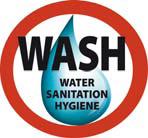/topics/climate-and-weather
Climate and Weather
Invitation for case study submission in water magazine
Posted on 06 Aug, 2010 11:26 AM
Our publication is coming up with the annual "Case Study Special Issue” in Sept. 2010. Its a collector’s issue, where we are covering leading industries across the globe.
India WASH forum e-newsletter - Update 13 July 2010
Posted on 02 Aug, 2010 11:56 AMWe see this newsletter as a platform for independent credible voice in the water and sanitation sector. Our emphasis is on bringing together critical news and information with analysis. In this issue we share news and analysis on topical issues and developments.
The Department of Drinking Water and Sanitation(DDWS) has simultaneously invited inputs to Discussion Papers on Drinking Water and Sanitation, circulated on Solution Exchange. Inputs given by India WASH Forum, on this, is enclosed in this Update. We have pointed out the missing elements of sanitation improvement strategy that include, criticality of providing water as an inseparable component to household sanitation, the tendency to see behavior change as a lifestyle issue and not linked to the hardware components, peoples livelihoods and living conditions. Suggestions for what needs to be done to strengthen the implementation mechanism of the flagship sanitation programme(TSC) and partnerships.
Climate change in India: Forgotten threats, forgotten opportunities - EPW paper
Posted on 02 Aug, 2010 01:12 AMThe document begins by commenting on the position taken by India in the global climate change discourse. India has consistently argued from the point of view of developing countries against restrictions on emissions that have been imposed on all countries globally, by stating that developing countries have started the industralisation processes recently and thus have contributed very little to the carbon emissions.
Thus, countries like India should not sacrifice their present development and growth for reducing global emissions. Any legitimate climate mitigation initiative should be just, equitable and secure developing countries' growth patterns.
The document argues that although India 's stand seems justifiable in the global discourse, the climate change issue is still a very sensitive one for India and India has the greatest to lose if it does not take proactive steps to deal with the issue of climate change in the future.
Salvaging and scapegoating: Slum evictions on Chennai’s waterways - EPW paper
Posted on 02 Aug, 2010 01:03 AMThe paper highlights the case of recent projects that have been planned on the river Cooum in Chennai.
Dam break study of Barna dam – A research report by National Institute of Hydrology
Posted on 30 Jul, 2010 08:20 AMThe study deals with dam break analysis of Barna dam located in the state of Madhya Pradesh carried out using the popular National Weather Service Dam Break Flood Forecasting (NWS DAMBRK) model to assess the likely maximum flood discharge and elevation to be attained in Bareli township, 22 km downstream of the dam.
Estimation of evaporation losses from water surface in Tawa reservoir – A research report by National Institute of Hydrology
Posted on 29 Jul, 2010 09:30 PMThe report deals with estimation of evaporation losses from water surface in Tawa reservoir in Hoshangabad district of Madhya Pradesh. The study is third in the series of evaporation studies to assess the adaptability of different methods for estimation of evaporation from free water surfaces in semi-arid areas. The estimates of evaporation from free water surface obtained by four methods namely Penman, Kohler, Van Bavel and Morton are compared with observed pan values on monthly, seasonal and annual basis.
GIS based rainfall-runoff modeling for Hemavathy catchment – A research report by National Institute of Hydrology
Posted on 29 Jul, 2010 09:19 PMThe report deals with Geographical Information Systems (GIS) based rainfall-runoff modeling using Topography Model (TOPMODEL) for the Hemavathy catchment of Cauvery basin in Western Ghats of Karnataka. The TOPMODEL is a variable contribution area model in which the predominant factors determining the formation of runoff are represented by the topography of the basin and a negative exponential law linking the transmissivity of the soil with the vertical distance from the ground level.
Investigation of the capability of Artificial Neural Network technique for estimating evapotranspiration from minimum weather data of Tavanur, Kerala – A research report by National Institute of Hydrology
Posted on 28 Jul, 2010 07:50 PMThe study attempted to estimate the actual crop evapotranspiration from minimum weather data of Tavanur, Kerala and resulted in an Artificial Neural Network (ANN) model, which makes use of average temperature data to estimate the actual evapotranspiration. The effectiveness of this model was evaluated using various statistical indices. The results of this model were compared with various existing techniques. The analysis led to the conclusion that the ANN models were performing better than all existing techniques for computing the actual evapotranspiration. However, the study was based on a single season lysimeter data and more research work may be required to reinforce this conclusion.
Infiltration studies in Sher-Umar river doab in Narmada basin – A research report by National Institute of Hydrology
Posted on 28 Jul, 2010 04:32 PMThe report presents infiltration studies of the year 1996-97 for the Bargi Left Bank Canal Command area of Narsinghpur district of Madhya Pradesh. Infiltration studies are mainly addressed to a variety of applications for managing water resources. The design of methods for estimation of flood mitigation and erosion control is often based on estimates of peak discharge derived from prediction of infiltration rate. Water conservation procedures require computation of cumulative infiltration to produce estimates of runoff yield.
Soil erosion studies for forested watersheds – A research report by National Institute of Hydrology
Posted on 24 Jul, 2010 10:09 PMIn the present study, an attempt has been made to estimate the soil erosion rate in Malaprabha representative basin by using WEPP model and Universal Soil Loss Equation. Soil erosion and sedimentation are the two important natural processes, which need immediate attention from the scientific community. Two major types of erosion are geological erosion and erosion from human or animal activities.






